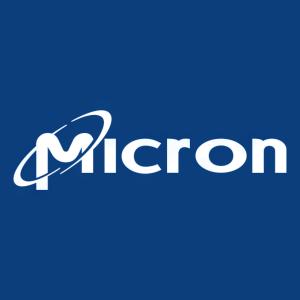Micron Ships the Industry’s First 176-Layer QLC NAND in Volume and Unveils the 2400 PCIe Gen4 Client SSD
Micron Technology, Inc. (Nasdaq: MU) has commenced volume shipments of the world’s first 176-layer QLC NAND SSD, the Micron 2400 SSD, a significant achievement in storage technology. This innovation delivers an industry-leading storage density and optimized performance for client applications. The SSD offers 33% higher I/O speed and 24% lower read latency compared to its predecessor. The device is available in a compact 2TB 22x30mm form factor, offering excellent power efficiency and enhanced user experience, further driving the adoption of QLC in the client market.
- Launch of the world's first 176-layer QLC NAND SSD, enhancing storage density.
- 33% increase in I/O speed and 24% lower read latency compared to previous generation.
- 2400 SSD enables design flexibility for manufacturers with smaller form factors.
- Expected tripling of QLC adoption in the client market by 2023, reaching nearly 80% by 2025.
- None.
Insights
Analyzing...
Groundbreaking technology enables world’s first 2TB 22x30mm SSD optimized for client applications
BOISE, Idaho, Jan. 11, 2022 (GLOBE NEWSWIRE) -- Micron Technology, Inc. (Nasdaq: MU), today announced it has begun volume shipments of the world's first 176-layer QLC NAND SSD. Built with the most advanced NAND architecture, Micron’s 176-layer QLC NAND delivers the industry’s leading storage density and optimized performance for a broad range of data-rich applications. Designed for use cases spanning client and data center environments, Micron’s transformative new NAND technology is now available with the introduction of the Micron 2400 SSD, the world’s first 176-layer PCIe Gen4 QLC SSD for client applications. The new 176-layer QLC NAND will also be incorporated into select Micron Crucial consumer SSDs, and available as a component for system designers.
Micron’s groundbreaking 176-layer QLC NAND provides a layer count and density unprecedented in QLC NAND flash and follows Micron’s delivery of the industry’s first 176-layer TLC NAND. Additionally, Micron’s 176-layer QLC NAND enables
"Micron’s 2400 SSD builds upon our 176-layer NAND industry leadership to drive the transition to QLC-based storage for the client market,” said Jeremy Werner, corporate vice president and general manager of Micron’s Storage Business Unit. “Furthering our market leadership, we expect the new 2400 PCIe Gen4 SSD will significantly accelerate the adoption of QLC in client devices as it enables broader design options and more affordable capacity."
QLC NAND SSD for everyday computing
The Micron 2400 SSD delivers industry-leading storage density in a mainstream, value NVMe SSD to enable flexible OEM solution design and provide an uncompromising user experience. With 176-layer NAND and PCIe Gen4 technologies combined, the 2400 SSD doubles the performance of Micron’s previous generation client SSD and delivers
The Micron 2400 SSD is also the world’s only 2TB 22x30mm M.2 SSD. This form factor shrinks the physical space required by
The 2400 SSD provides a robust user experience across diverse use cases enabled in part by Micron’s Host Memory Buffer technology that allows the host to flexibly optimize performance. The SSD features low-power consumption for all-day, untethered computing, with active idle power being reduced by
Resources
About Micron Technology, Inc.
We are an industry leader in innovative memory and storage solutions transforming how the world uses information to enrich life for all. With a relentless focus on our customers, technology leadership, and manufacturing and operational excellence, Micron delivers a rich portfolio of high-performance DRAM, NAND and NOR memory and storage products through our Micron® and Crucial® brands. Every day, the innovations that our people create fuel the data economy, enabling advances in artificial intelligence and 5G applications that unleash opportunities — from the data center to the intelligent edge and across the client and mobile user experience. To learn more about Micron Technology, Inc. (Nasdaq: MU), visit micron.com.
© 2022 Micron Technology, Inc. All rights reserved. Information, products, and/or specifications are subject to change without notice. Micron, the Micron logo, and all other Micron trademarks are the property of Micron Technology, Inc. All other trademarks are the property of their respective owners.
_________________________________
1 ONFI 4.x – 1600 MT/s vs. 1200 MT/s
2 In comparison to Micron’s previous generation 96-layer QLC NAND
3 Forward Insights, SSD Insights, 11/2021
4 In comparison to Micron’s previous generation 96-layer QLC NAND
5 Per Intel testing on Intel.com: Project Athena—A Program for Delivering a New Class of Laptops (intel.com)








